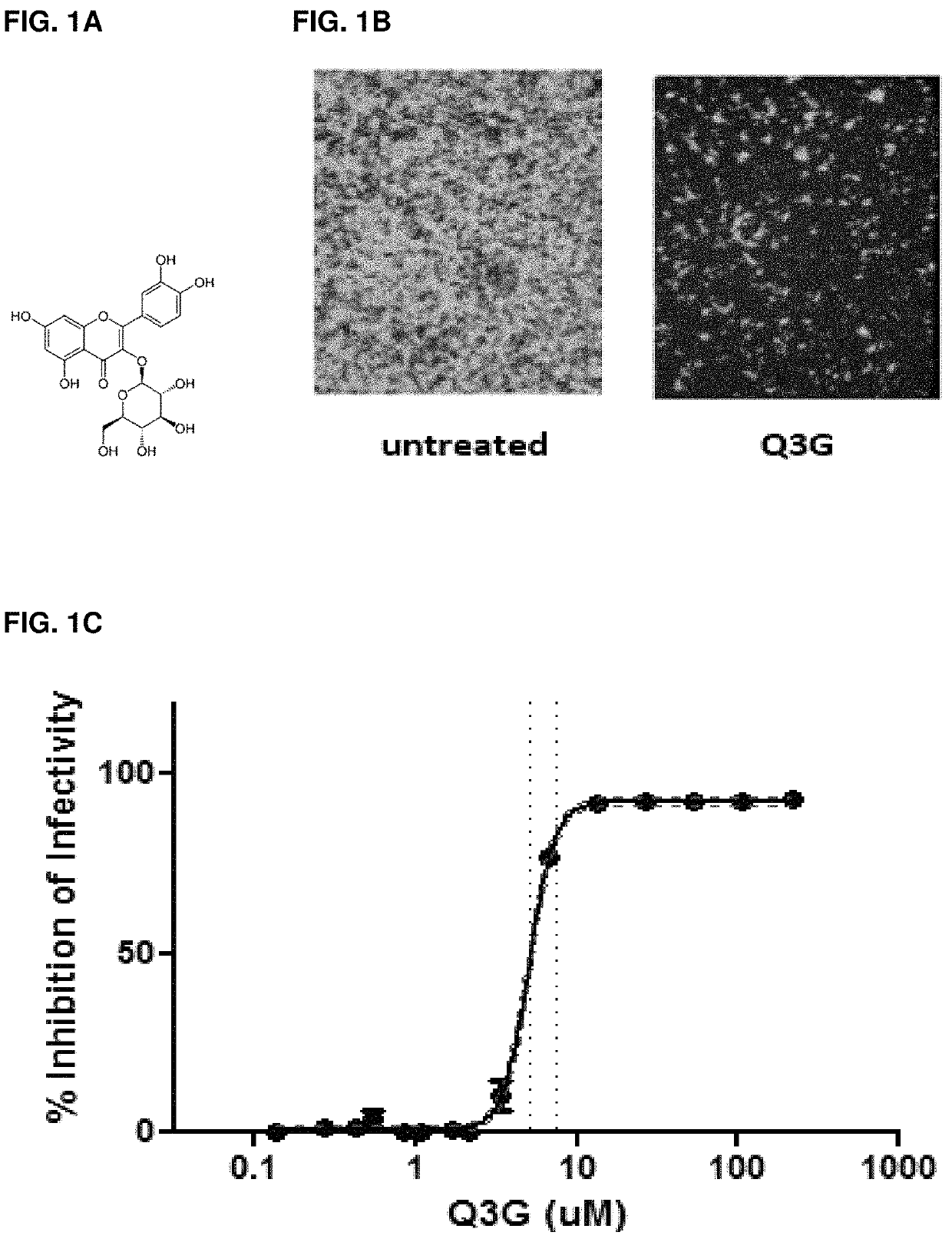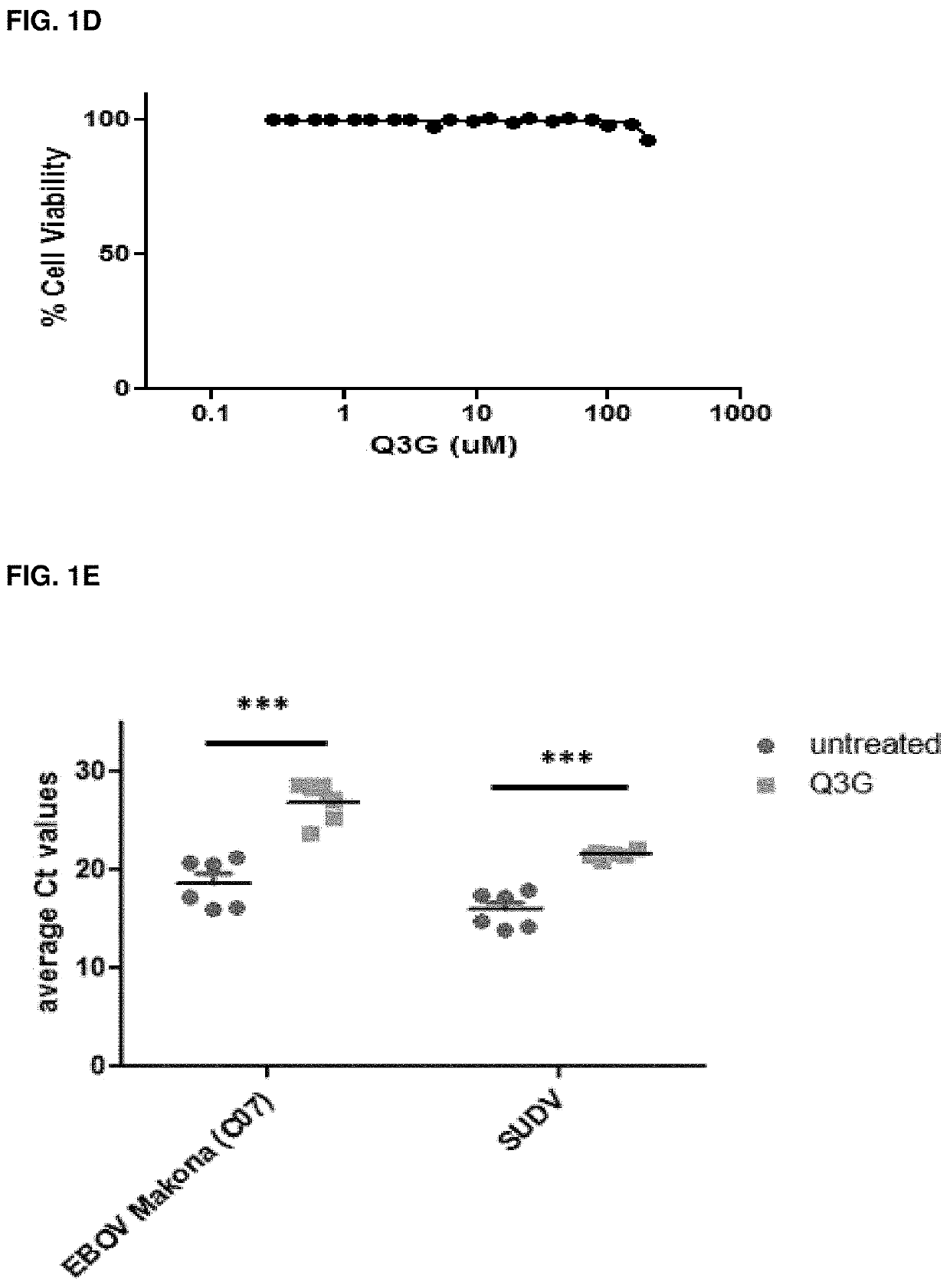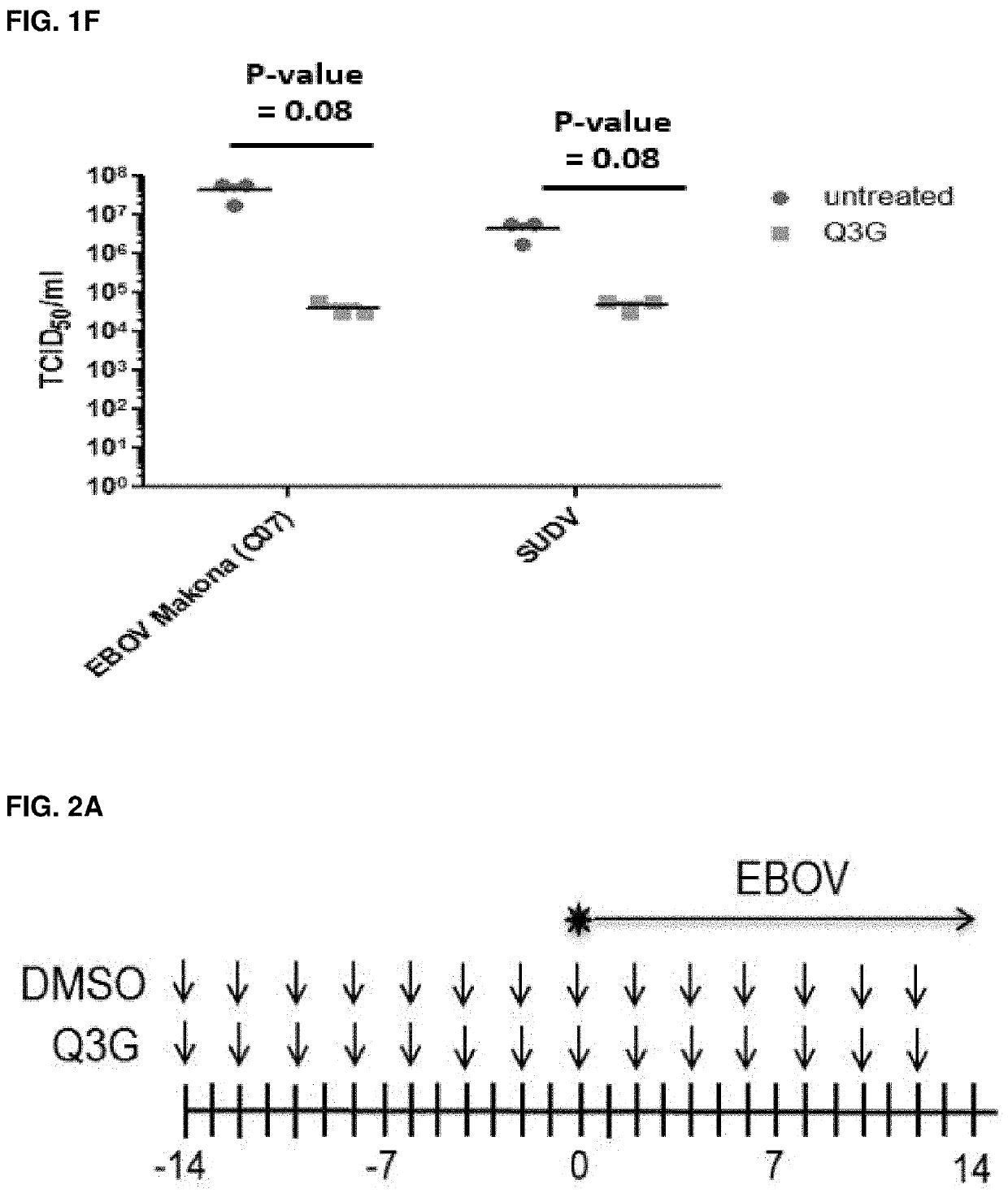Methods of preventing or treating filovirus and flavivirus diseases
a technology of filovirus and flavivirus, applied in the direction of anti-vector-borne diseases, organic active ingredients, pharmaceutical delivery mechanisms, etc., can solve the problem that the virus may inadvertently enhance the severity, and achieve the effect of protecting mi
- Summary
- Abstract
- Description
- Claims
- Application Information
AI Technical Summary
Benefits of technology
Problems solved by technology
Method used
Image
Examples
example 1
and Methods
[0097]Molecules
[0098]Q3G was obtained commercially (Sigma-Aldrich, 17793).
[0099]Cells and Viruses
[0100]Vero E6 cells were maintained in Dulbecco's Modified Eagle Medium (HyClone) (DMEM) supplemented with 10% fetal bovine serum (Sigma-Aldrich). The generation of pseudotyped vesicular stomatitis viruses containing the glycoproteins of Ebola virus, Sudan virus and Reston virus (VSVΔGP-EBOV, VSVΔGP-SUDV, VSVΔGP-RSTV) has been published previously (Qiu, 2011; Cote, 2004). The following ebolaviruses were used: EBOV-Kikwit-GFP (based on H. sapiens-tc / COD / 1995 / Kikwit-9510621, Genbank accession no. AY354458), EBOV-Makona (H. sapiens-tc / GIN / 2014 / Gueckedou-007, Genbank no. KJ660347.2), SUDV-Boniface (H. sapiens-tc / SUD / 1976 / Boniface, Genbank accession no. FJ968794.1), and mouse-adapted EBOV (Ebola virus USAMRIID / BALB / c-lab / COD / 1976 / Mayinga-MA-p3).
[0101]Two different ZIKV strains from the Asian lineage, which were isolated from laboratory-confirmed patients, were used: PLCal_ZV (GenBa...
example 2
Antiviral Activity of Q3G Against Multiple Wildtype Ebolaviruses
[0131]In order to test the antiviral activity of this compound against ebolavirus, the half maximal effective concentration (EC50) and 90% of maximal effective concentration (EC90) values were first calculated using Vero E6 epithelial cells. Cells were pre-treated with 2-fold dilutions of Q3G for 1 hour and infected with an enhanced GFP-expressing EBOV virus at an MOI of 0.1 for 1 hour in the presence of Q3G. The infected cells were incubated in the presence of Q3G for three days, after which fluorescent images were taken of each Q3G dilution (one dilution represented in FIG. 1B) and the fluorescence was quantified using a Bio-Tek™ plate reader. This produced a curve from which the EC50 and EC90 values were calculated to be 5.3 μM (Cl+ / −0.32) and 9.3 μM, respectively (FIG. 1C). Importantly, the decrease in viral titers could not be attributed to the toxicity of Q3G, as the cells exhibited 100% viability at all concentra...
example 3
ntiviral Activity of Q3G Against Multiple Wildtype Ebolaviruses
[0132]In order to test whether the antiviral activity observed in vitro would also be protective in vivo, a pilot experiment (n=10) was first performed in which C57BL / 6 mice were treated with 50 mg / kg of Q3G every other day for 2 weeks followed by challenge with a lethal dose (1000×LD50) of mouse-adapted Ebola virus (MA-EBOV). Q3G treatments were also continued every 48 h (every other day) after infection for an additional 12 days (FIG. 2A). All control animals succumbed to the viral challenge with a mean time to death of 7.4 days + / −1.1 while all Q3G-treated mice survived (FIG. 2B) and showed only mild signs of disease such as minimal weight loss (FIG. 2C). For the second experiment, the robustness of Q3G efficacy was tested by using Balb / c mice, which have a different genetic background and immune response from C57BL / 6 mice. In addition to 2 weeks pre-treatment, shorter pretreatment times were also used including 13 d,...
PUM
 Login to View More
Login to View More Abstract
Description
Claims
Application Information
 Login to View More
Login to View More - R&D
- Intellectual Property
- Life Sciences
- Materials
- Tech Scout
- Unparalleled Data Quality
- Higher Quality Content
- 60% Fewer Hallucinations
Browse by: Latest US Patents, China's latest patents, Technical Efficacy Thesaurus, Application Domain, Technology Topic, Popular Technical Reports.
© 2025 PatSnap. All rights reserved.Legal|Privacy policy|Modern Slavery Act Transparency Statement|Sitemap|About US| Contact US: help@patsnap.com



